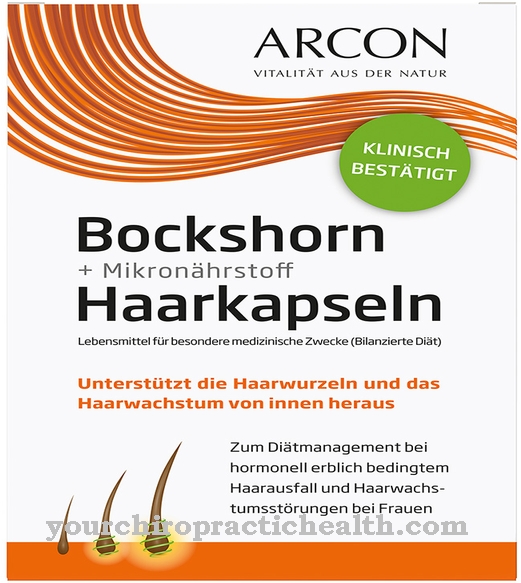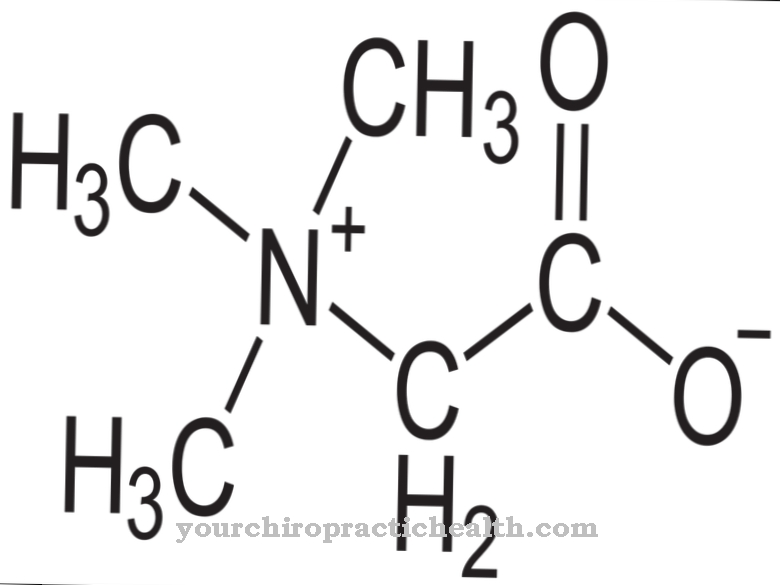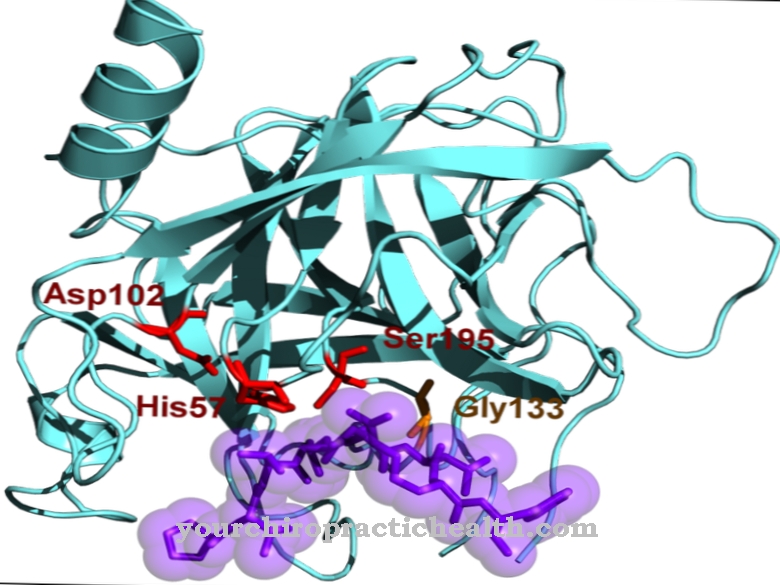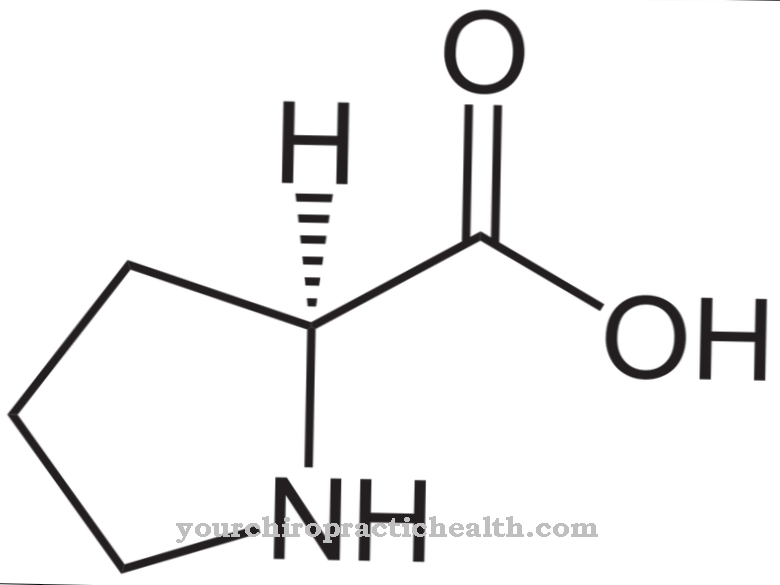Catecholamines are biogenic amines and perform important tasks as neurotransmitters and hormones. The best-known substances from this group are the stress hormones adrenaline and noradrenaline. If the adrenal medulla is underfunction, there is an insufficient supply of catecholamines, which is accompanied by fainting spells.
What are catecholamines?
Catecholamines are biogenic amines that appear in particular as neurotransmitters. They come from the endocrine glands of the adrenal medulla and are made with the participation of the sympathetic nervous system. They bind to the so-called alpha and beta receptors and have a stimulating effect on the circulation. The best-known representatives of this group are the stress hormones adrenaline, noradrenaline and dopamine.
Catecholamines act quickly as stress hormones because of their binding to the alpha and beta receptors. This distinguishes them from glucocorticoids such as cortisol, which do not take effect quickly enough in the event of sudden short-term stress. Adrenaline was the first hormone to be extracted, researched, and man-made. Catecholamines are mimicked by many drugs and are used in intensive care medicine to treat shock and allergic reactions.
Anatomy & structure
The catecholamines are involved in biosynthesis. The biosynthesis of these substances takes place in the adrenal medulla and in the catecholaminergic nerve cells. The amino acid tyrosine is first converted into levodopa by the enzyme tyrosine hydroxylase. The aromatic L-amino acid decarboxylase turns this levodopa into dopamine. In dopamine beta-hydroxylase, dopamine is converted to norepinephrine when required.
Noradrenaline can be methylated to become adrenaline. This last conversion is catalyzed by phenylethanolamine N-methyltransferase. Catecholamines can also be inactivated. This inactivation corresponds to an uptake in the cells and a breakdown of the substances by catechol-O-methyltransferase or monoamine oxidase. The structure of the catecholamines stimulates the alpha-1 and beta receptors on the heart, on the bronchi, in the gastrointestinal tract and in the blood vessels.
Function & tasks
Catecholamines are released in the adrenal medulla through the action of the sympathetic nervous system. They should ensure survival in the event of sudden stress. Due to evolution, flight and fight are among the most important survival strategies. The body needs an excess of energy for both strategies. This energy is provided by catecholamines. They have an impact on the circulatory system, have a stabilizing effect and enable people to go beyond their limits.
Catecholamines decentralize and thus ensure that the heart and internal organs are still supplied with blood even if blood is lost. All catecholamines act on G protein-coupled receptors. These receptors are either adreno or dopamine receptors and are located both in the vascular system and in the internal organs. There are considerable differences between the effects of individual catecholamines. While some of them stimulate the receptors, others block certain receptors. For example, noradrenaline blocks the repeated release of catecholamines. Adrenaline, on the other hand, increases blood pressure and heart rate. Norepinephrine only increases blood pressure and has little effect on frequency.
Dopamine, in turn, has a positive effect on the heart's force of contraction. The stimulation of dopaminergic receptors thus increases renal, cerebral and mesenteric blood flow. When beta-2 receptors are stimulated, on the other hand, the metabolism increases, the vascular resistance decreases and the bronchi and vessels expand. The stimulation of the beta-1 receptors in the heart in turn increases the strength of the heart, the heart rate and the excitability of the heart. The gastrointestinal movements are usually slowed down by catecholamines. So the effects of catecholamines are numerous and affect the nervous system in the same way as the metabolic, blood and cardiovascular systems.
You can find your medication here
➔ Medicines for painDiseases
A rare disease associated with catecholamines is pheochromocytoma. A hormone-producing tumor of the adrenal medulla forms. The paraganglioma must be distinguished from this. This is a hormone-producing tumor of the sympathetic trunk in the spine. Both tumors can cause similar symptoms, because in both cases the adrenal medulla produces more adrenaline and noradrenaline. More rarely, there is also an overproduction of dopamine.
Due to the circulatory stimulating effect of the stress hormones, high blood pressure occurs. Heart pounding and sweating are among the most common symptoms. Headaches, tremors, and weight loss are also associated with this condition. Inner unrest and panic set in.Due to the increased adrenaline level, blood sugar also rises and after a certain time it can promote diabetes as a secondary disease. In most cases, hormone-producing tumors are benign. The tumors occur mainly in the context of various hereditary diseases, for example in the context of the Hippel-Lindau syndrome.
Hypofunction of the adrenal glands is somewhat more common than hormone-producing tumors of the adrenal medulla. Such sub-functions can arise, for example, after an operation in the kidney area. As soon as the body does not produce enough catecholamines, the blood pressure can only be maintained with difficulty. Vertigo attacks with fainting spells set in. Something similar happens in the context of the Waterhouse-Friedrichsen syndrome. This is a complete failure of the adrenal glands preceded by a pneumococcal or meningococcal infection.
While hormone-producing tumors are usually removed surgically, the doctor treats hypofunction of the adrenal medulla by giving catecholamines. The administration of catecholamines also plays a role in emergency medicine and may be necessary here, for example, after resuscitation.
























.jpg)



